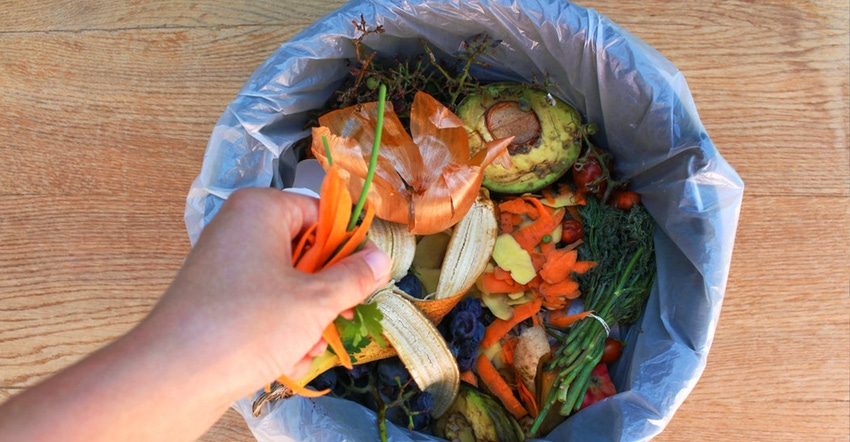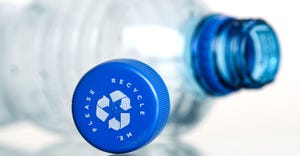Exploring the Global Food Loss and Waste Accounting and Reporting Standard
Waste360 attended a recent webinar called, “Measuring Food Waste: The Global FLW Standard.” featuring Brian Lipinski, head researcher and manager of food loss and waste at the World Resources Institute (WRI), in conversation with Gijs Langeveld, managing director at Polymer Science Park and principal consultant at Project Gijs BV. The discussion hosted by Be Waste Wise explored quantifying and reporting on food loss and waste and more.

Waste360 attended a recent webinar called, “Measuring Food Waste: The Global FLW Standard.” featuring Brian Lipinski, head researcher and manager of food loss and waste at the World Resources Institute (WRI), in conversation with Gijs Langeveld, managing director at Polymer Science Park and principal consultant at Project Gijs BV. The discussion hosted by Be Waste Wise explored quantifying and reporting on food loss and waste and more.
Lipinski explained that WRI is a global research organization that works at the intersection of environment, economic wellbeing, and human wellbeing—and that it is the secretariat of Food Loss & Waste Protocol, a multi-stakeholder partnership that developed the global Food Loss and Waste Accounting and Reporting Standard. WRI is also secretariat of Champions 12.3, a coalition of executives dedicated to mobilizing action around achieving Sustainable Development Goal Target 12.3—halving food loss and waste by 2030.
To set the stage, Lipinski first talked about the scale of the challenges related to food loss and waste. He noted that one-third of all food is lost or wasted each year, which costs the global economy $940 billion. In addition, eight percent of annual global greenhouse emissions are due to food loss and waste. In other words, “if it were a country, food loss and waste would be the third-largest greenhouse gas emitter.” He then dug into WRI tracking of global progress on SDG 12.3—within the categories of setting targets, measuring, and action.
Lipinski then spoke about what he deemed the top food loss and waste stories of 2021: the World Bank’s Food Smart Country Diagnostic; new global measurements on food waste and loss that suggest it is occurring on a larger scale; the Chinese Food Waste Law; private sector efforts to reduce food loss and waste; and the ongoing effects of COVID-19.
The second part of the webinar focused on the Food Loss and Waste (FLW) Standard. The steering committee for this Standard includes seven expert institutions: Consumer Goods Forum, Food and Agriculture Organization (FAO), EU Fusions, UN Environment Programme (UNEP), World Business Council for Sustainable Development (WBCSD), World Resources Institute (WRI) and Waste and Resources Action Programme (WRAP). The Standard aims to provide common language; offer a standardized way to summarize an FLW inventory; and be adaptive rather than prescriptive. It helps users understand and work through four questions:
Why are you quantifying this—and what do you hope to get out of your measurement efforts?
What are you going to quantify; what are you actually going to measure?
How are you going to do it—what methods?
How do you report and share the info publicly?
Lipinski also explained how the Standard allows an entity to select which combination of material types (food and/or inedible parts) and destinations (where the material goes when it leaves the food chain) it considers to be “food loss and waste.”
The third part of the webinar covered the 10x20x30 initiative, the vision of which is to massively increase private sector contribution to the global goal of reducing food loss and waste by 50 percent by 2030 by catalyzing efforts “up” the supply chain. WRI works with participating companies to provide training and interactions in order to learn how to implement “target, measure, act” within their own operations. Lipinski noted that participants ”find they save money because it’s more efficient, it’s a positive profile to be seen as taking on food waste, and generally we’ve found that companies are finding this to be positive both from a social and business perspective.” So far, 223 companies are participating, with 75 percent of them having established a baseline and actively reporting on food loss and waste.
Lipinski highlighted several examples including Campbell’s, which has achieved a 36% reduction in food loss and waste since 2017 across all North American facilities. Two ways the company has done this is to repurpose previously “wasted” food to make new items, and to divert food loss and waste to high-value destinations such as animal feed. He also spoke about Kikkoman, which has an impressively small .4 percent rate of food loss and waste, due to innovations such as the repurposing byproducts of its soy sauce and soy milk into things like nutritional powder, fertilizer, animal feed, and as fuel for its boilers.
In wrapping up the discussion, Lipinski noted that many companies “tend to think they are already doing everything they could be doing; they are very set in their ways.” But, once companies start with the “target, measure, act” approach, they find new and interesting ways of doing things. “It’s usually something quite simple, like ‘oh, we were throwing out this product that could be turned into something else.’”
About the Author(s)
You May Also Like




